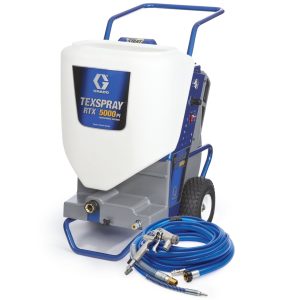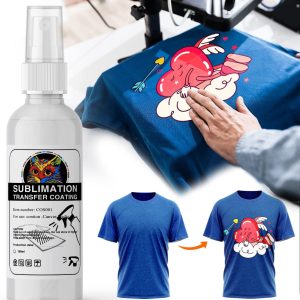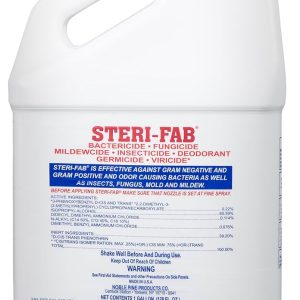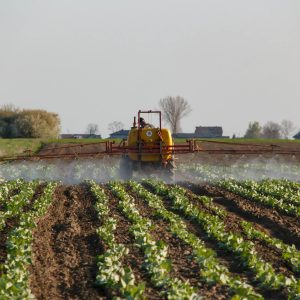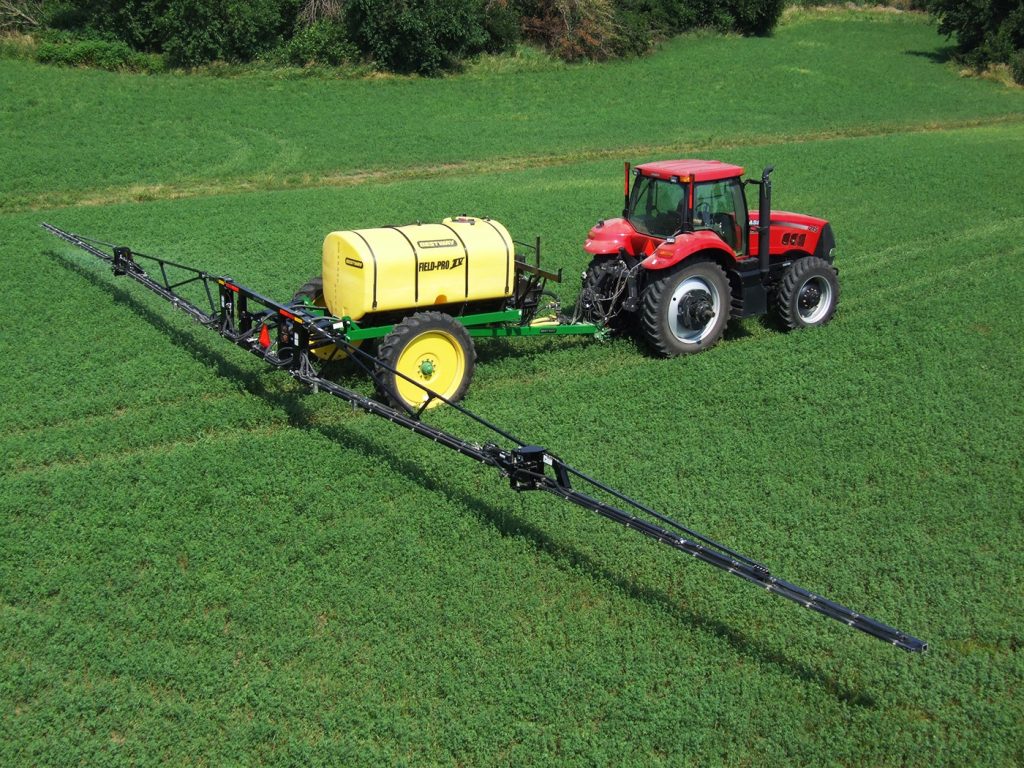
What Makes Tanker Sprayers Essential for Large-Scale Agriculture?
Tanker sprayers represent the pinnacle of agricultural efficiency, combining substantial liquid storage capacity with precision application technology to deliver unmatched performance in modern farming operations. These robust systems have revolutionized how farmers approach crop protection, fertilizer application, and field maintenance across thousands of acres worldwide.
The agricultural industry has witnessed tremendous growth in farm sizes, with the average farm increasing by 67% over the past three decades. This expansion has created an urgent need for equipment that can handle large-scale operations efficiently. Tractor operated sprayers provide a wide range of benefits such as maximizing crop yields, precision and accurate use of fertilizers, advanced pest control, and higher productivity. Traditional smaller sprayers simply cannot meet the demands of contemporary agricultural operations, making tanker sprayers an indispensable investment for serious farmers.
Modern tanker sprayer systems integrate advanced pump technology, precision nozzles, and computer-controlled distribution systems to ensure uniform application across vast field areas. These systems typically feature tank capacities ranging from 500 to 4,000 gallons, allowing operators to cover extensive acreage without frequent refilling interruptions. The combination of large storage capacity and sophisticated application technology makes tanker sprayers the preferred choice for commercial farming operations, custom applicators, and agricultural contractors who demand maximum efficiency and reliability.
Understanding Tanker Sprayer Tank Capacities and Specifications
Tank capacity serves as the primary determining factor when selecting the ideal tanker sprayer for your agricultural operation. Tank storage volume depends on model and ranges from as low as 7 gallons up to 20,000 gallons. However, for agricultural tanker sprayer applications, the most practical range typically falls between 800 and 3,000 gallons, providing the optimal balance between coverage area and equipment maneuverability.
The construction materials used in tanker sprayer tanks have evolved significantly, with UV-stabilized polyethylene emerging as the industry standard. These tanks are designed to withstand various chemicals and liquids, making them ideal for agricultural, industrial, or landscaping use. With their sturdy construction and versatile design, polyethylene sprayer tanks offer convenience and efficiency for a wide range of tasks. This advanced material technology ensures long-term durability while maintaining chemical compatibility with herbicides, pesticides, fertilizers, and other agricultural solutions.
Standard Tanker Sprayer Tank Capacity Options
| Tank Size | Coverage Area | Ideal Application | Refill Frequency |
|---|---|---|---|
| 800-1,000 gallons | 80-120 acres | Medium farms | 2-3 times daily |
| 1,200-1,500 gallons | 140-200 acres | Large operations | 1-2 times daily |
| 1,800-2,200 gallons | 220-300 acres | Commercial farms | Once daily |
| 2,500-3,000 gallons | 350-450 acres | Custom applicators | Every 1-2 days |
Tank design features significantly impact operational efficiency, with modern tanker sprayers incorporating anti-slosh baffles, graduated volume markers, and large-diameter fill openings for rapid loading. Advanced models include integrated agitation systems that maintain solution homogeneity during extended application periods, ensuring consistent chemical distribution from the first gallon to the last.
Key Benefits of Implementing Tanker Sprayer Technology
The adoption of tanker sprayer systems delivers measurable improvements in agricultural productivity, cost efficiency, and operational safety. There are numerous benefits to using agricultural sprayers. Increased crop yield from the crops receiving the necessary nutrients and protection against pests and diseases. Precise application, with a targeted approach that minimises waste and helps protect the environment. These advantages compound over time, making tanker sprayers a critical investment for sustainable farming success.
Labor cost reduction represents one of the most significant economic benefits of tanker sprayer implementation. The sprayers are of great help to the farmers in saving on labor costs. The precise distribution of the solution on crops helps reduce the usage of fertilizers significantly, meaning less waste and more cost-efficient farming. Manual spraying is a tedious task. A single operator with a properly equipped tanker sprayer can accomplish the work that previously required multiple workers with smaller equipment, dramatically reducing per-acre application costs while maintaining superior coverage quality.
Operational Efficiency Advantages
- Extended Coverage Range: Single fills cover 100-400+ acres depending on tank size
- Reduced Downtime: Fewer refill stops increase productive field time by 40-60%
- Consistent Application: Computer-controlled systems maintain uniform distribution rates
- Weather Window Optimization: Rapid coverage capability maximizes favorable spraying conditions
- Fuel Efficiency: Consolidated operations reduce total fuel consumption per treated acre
Environmental stewardship benefits make tanker sprayers increasingly attractive to conservation-minded farmers. Sprayers can significantly reduce chemical runoff and drift, minimizing environmental impact and preserving water quality. Additionally, precise application helps minimize the overall use of chemicals, promoting sustainable farming practices. Modern tanker sprayer systems incorporate drift reduction technology, GPS-guided application mapping, and variable rate technology to ensure chemicals are applied only where needed in optimal quantities.
Choosing the Right Tanker Sprayer Configuration
Selecting the optimal tanker sprayer configuration requires careful analysis of your specific operational requirements, field characteristics, and application preferences. The decision process involves evaluating tank capacity, boom width, pump specifications, and mounting options to create a system that maximizes efficiency while fitting within operational constraints.
Self-propelled tanker sprayers offer maximum flexibility and speed, featuring dedicated chassis designs optimized for spraying operations. These units typically provide superior ground clearance, flotation tires for wet field conditions, and integrated cab comfort systems that reduce operator fatigue during long application sessions. Self-propelled models excel in large-scale operations where speed and independence from tractor availability are paramount considerations.
Trailer-mounted tanker sprayers present excellent value for farms with existing tractor power, offering substantial tank capacities while maintaining reasonable acquisition costs. These systems can be easily moved between different tractors and provide excellent stability during transport and application. Trailer-mounted configurations work particularly well for custom applicators who need equipment flexibility across multiple farm locations.
Critical Selection Factors
- Field Size and Layout: Larger, more uniform fields favor wider boom widths and bigger tanks
- Crop Types: Row crops require different boom heights and nozzle configurations than broadcast applications
- Terrain Conditions: Hilly or soft ground conditions influence chassis and tire selection
- Annual Acres Treated: Higher volume operations justify more sophisticated equipment investments
- Chemical Application Timing: Tight spraying windows require faster, more efficient systems
Pump selection significantly impacts tanker sprayer performance, with centrifugal pumps providing high flow rates for rapid tank filling and boom supply, while diaphragm pumps offer superior chemical compatibility and precise pressure control. Many modern tanker sprayers incorporate dual pump systems that optimize both filling speed and application precision.
For farms requiring versatile application capabilities, consider systems compatible with three point sprayer attachments for specialized treatments or smaller field applications. This flexibility ensures maximum equipment utilization throughout the growing season.
Advanced Tanker Sprayer Features and Technology
Modern tanker sprayer systems incorporate sophisticated technology designed to enhance application precision, operator convenience, and environmental compliance. These advanced features represent significant improvements over traditional spraying equipment, delivering measurable returns through improved efficiency and reduced chemical waste.
GPS guidance systems have become standard equipment on professional-grade tanker sprayers, providing sub-inch accuracy for section control, overlap elimination, and automatic application mapping. These systems automatically shut off boom sections when approaching previously treated areas, preventing double-application while maintaining detailed records for compliance reporting and operational analysis. Advanced models integrate with farm management software to optimize application timing based on weather forecasts, crop growth stages, and chemical recommendations.
Variable Rate Technology (VRT) enables tanker sprayers to automatically adjust application rates based on prescription maps created from soil sampling, yield data, or satellite imagery. This precision agriculture approach can reduce chemical usage by 15-30% while improving efficacy through targeted application. VRT systems seamlessly integrate with tank agitation and pump control to maintain accurate mixing ratios across varying application rates.
Cutting-Edge Feature Integration
- Automated Boom Height Control: Maintains optimal spray pattern and reduces drift risk
- Real-Time Weather Monitoring: Alerts operators to changing conditions that affect application quality
- Chemical Injection Systems: Enable precise tank mixing without pre-mixing requirements
- Pulse Width Modulation (PWM): Maintains consistent droplet size across varying speeds and rates
- Integrated Rinse Systems: Facilitate thorough cleaning between different chemical applications
Operator comfort and safety features significantly impact daily productivity and long-term operational sustainability. Employing boom sprayers reduces the threat of allergies and infections. Operators can adjust the heights of the sprayer to maintain a safe distance to ensure safety without minimizing the work capacity. Modern tanker sprayer cabs feature positive pressure systems, carbon filtration, and ergonomic control layouts that minimize operator chemical exposure while maximizing application efficiency.
Tanker Sprayer Maintenance and Operational Best Practices
Proper maintenance protocols ensure tanker sprayer systems deliver consistent performance throughout their operational lifespan while minimizing unexpected downtime during critical application windows. Implementing systematic maintenance schedules significantly extends equipment life and maintains optimal application quality.
Daily maintenance routines should include visual inspection of all nozzles for wear or plugging, verification of pump pressure and flow rates, and examination of boom levelness and stability. Tank cleaning procedures vary based on chemical compatibility, but thorough rinsing between different product types prevents cross-contamination and maintains application efficacy. Our tanks are compatible and often used with many of today’s common agricultural chemicals, fertilizers, pesticides, herbicides and fungicides.
Seasonal preparation activities include comprehensive system flushing, seal and gasket replacement, pump winterization procedures, and boom folding mechanism lubrication. Proper storage preparation prevents freeze damage in cold climates while protecting UV-sensitive components from summer degradation. Professional maintenance services can identify potential issues before they result in costly field failures.
Essential Maintenance Schedule
| Frequency | Maintenance Tasks | Expected Duration |
|---|---|---|
| Daily | Nozzle inspection, pressure check, visual examination | 15-30 minutes |
| Weekly | Filter replacement, calibration verification, boom inspection | 45-60 minutes |
| Monthly | Pump service, agitation check, safety system test | 2-3 hours |
| Seasonally | Complete overhaul, seal replacement, system flush | 4-8 hours |
Calibration accuracy directly impacts both application effectiveness and environmental compliance. Regular calibration ensures tanker sprayers deliver precise chemical rates while maintaining optimal droplet size and distribution uniformity. Modern systems incorporate electronic flow monitoring and automatic calibration features, but manual verification remains essential for maintaining accuracy.
Applications and Use Cases for Tanker Sprayer Systems
Tanker sprayer applications extend far beyond traditional crop protection, encompassing diverse agricultural, industrial, and municipal use cases that leverage their substantial capacity and precision application capabilities. Understanding these varied applications helps operators maximize equipment utilization while developing additional revenue opportunities.
Agricultural applications represent the primary use case for tanker sprayers, including herbicide application for weed control, insecticide treatments for pest management, fungicide applications for disease prevention, and liquid fertilizer distribution for crop nutrition. They help in protecting crops from pests and diseases, improving yield, and promoting healthy plant growth. Sprayers come in various types including handheld, backpack, knapsack, boom, and drone sprayers, each suited to different farm sizes and application needs. Large-scale operations particularly benefit from tanker sprayers’ ability to maintain consistent application rates across extensive acreage while minimizing application time during optimal weather windows.
Custom application services have emerged as a profitable business model for tanker sprayer owners, providing specialized spraying services to smaller farms that cannot justify purchasing their own large-scale equipment. Custom applicators typically charge $8-$15 per acre for standard applications, with premium rates for specialty treatments or difficult field conditions. This service model enables smaller operations to access professional-grade application technology while providing tanker sprayer owners with additional income streams.
Specialized Application Opportunities
- Pasture and Rangeland Management: Brush control and invasive species treatment
- Rights-of-Way Maintenance: Utility corridor vegetation management
- Industrial Site Management: Dust suppression and vegetation control
- Municipal Applications: Park maintenance and roadside vegetation management
- Conservation Programs: Habitat enhancement and restoration projects
Precision agriculture integration enables tanker sprayers to participate in advanced farming systems that optimize input usage through data-driven decision making. GPS-guided application mapping, soil sampling integration, and yield monitoring coordination create comprehensive management systems that maximize profitability while minimizing environmental impact.
Cost Analysis and Return on Investment for Tanker Sprayers
Understanding the financial implications of tanker sprayer ownership requires comprehensive analysis of acquisition costs, operational expenses, and productivity improvements. While initial equipment investments are substantial, the long-term economic benefits typically justify the expense for operations treating significant annual acreage.
Initial investment costs for tanker sprayer systems vary significantly based on capacity, features, and manufacturer selection. Entry-level trailer-mounted units with 1,000-gallon capacity start around $35,000-$50,000, while high-end self-propelled models with 4,000+ gallon capacity and advanced technology packages can exceed $500,000. However, these costs should be evaluated against the productivity improvements and labor savings that tanker sprayers provide.
Annual operating costs include fuel, maintenance, insurance, depreciation, and operator wages. Fuel consumption typically ranges from 0.5-1.2 gallons per acre depending on field conditions, equipment efficiency, and application requirements. Maintenance costs average $2-$4 per acre annually for well-maintained equipment, while insurance and depreciation add approximately $3-$6 per acre depending on equipment value and usage intensity.
Financial Performance Metrics
| Farm Size | Annual Savings | ROI Timeline | Break-even Acres |
|---|---|---|---|
| 2,000 acres | $15,000-$25,000 | 3-5 years | 1,500 acres |
| 4,000 acres | $35,000-$50,000 | 2-4 years | 2,500 acres |
| 6,000 acres | $60,000-$85,000 | 2-3 years | 3,500 acres |
| 10,000+ acres | $100,000+ | 1-2 years | 4,000 acres |
Productivity improvements generate the primary return on tanker sprayer investments through increased application speed, reduced labor requirements, and improved application timing. A properly equipped tanker sprayer can treat 40-80 acres per hour compared to 8-15 acres per hour with conventional equipment, representing a 300-400% productivity increase that translates directly to reduced per-acre application costs.
Safety Considerations and Regulatory Compliance
Tanker sprayer operations require strict adherence to safety protocols and regulatory requirements that protect operators, the environment, and public health. Modern agricultural chemicals present significant risks when improperly handled, making comprehensive safety training and equipment maintenance essential components of responsible spraying operations.
Operator safety systems have evolved significantly, with modern tanker sprayers incorporating positive pressure cabs, carbon filtration systems, and emergency shutdown controls that minimize chemical exposure risks. Personal protective equipment (PPE) requirements vary by chemical type and application method, but typically include chemical-resistant suits, gloves, eye protection, and respiratory equipment when working outside protected cab environments.
Environmental compliance requirements include buffer zone maintenance around sensitive areas, drift control measures during windy conditions, and proper handling of chemical containers and rinse water. Many states require certified applicator licenses for commercial spraying operations, with continuing education requirements that ensure operators stay current with evolving regulations and best practices.
Critical Safety Protocols
- Pre-Application Inspection: Complete system check before each use
- Weather Monitoring: Continuous wind speed and direction assessment
- Emergency Procedures: Established protocols for spills and equipment failures
- Chemical Compatibility: Verification of tank and system component compatibility
- Record Keeping: Detailed application logs for regulatory compliance
Equipment safety features include emergency shut-off systems, pressure relief valves, and boom breakaway mechanisms that prevent damage during contact with obstacles. Regular inspection and testing of these safety systems ensures reliable operation when needed, preventing accidents that could result in environmental damage or operator injury.
Frequently Asked Questions About Tanker Sprayers
What size tanker sprayer do I need for my farm?
Tank size selection depends on your annual acres treated, field sizes, and desired application frequency. For operations treating 1,000-2,000 acres annually, an 800-1,200 gallon tanker sprayer provides optimal efficiency. Larger operations exceeding 3,000 acres benefit from 1,500+ gallon capacity systems that minimize refill stops and maximize productive field time.
How much does a quality tanker sprayer cost?
New tanker sprayer prices range from $35,000 for basic trailer-mounted units to $500,000+ for self-propelled models with advanced technology. Used equipment offers significant savings, with 5-10 year old models typically priced at 40-60% of original cost. Financing options make new equipment accessible with typical payments ranging from $800-$3,500 monthly depending on equipment value and terms.
What maintenance does a tanker sprayer require?
Regular maintenance includes daily nozzle inspection and cleaning, weekly filter replacement, and seasonal pump service and system calibration. Annual maintenance costs typically range from $2-$4 per acre treated, with higher costs for equipment used intensively or in harsh conditions. Proper maintenance significantly extends equipment life and prevents costly field breakdowns.
Can tanker sprayers apply different types of chemicals?
Modern tanker sprayers handle virtually all agricultural chemicals including herbicides, insecticides, fungicides, and liquid fertilizers. Our tanks are compatible and often used with many of today’s common agricultural chemicals, fertilizers, pesticides, herbicides and fungicides. However, thorough cleaning between different chemical types prevents cross-contamination and maintains application effectiveness.
What are the benefits of GPS-guided tanker sprayers?
GPS-guided systems provide sub-inch accuracy for section control, eliminating overlaps and skips while maintaining detailed application records. These systems can reduce chemical usage by 15-25% while improving coverage uniformity and regulatory compliance. Advanced models integrate with farm management software for optimized application timing and rate prescriptions.
Ready to upgrade your agricultural operation with professional-grade tanker sprayer equipment? Contact our agricultural equipment specialists today for personalized recommendations and competitive pricing on industry-leading tanker sprayer systems that will transform your spraying efficiency and profitability.
Sources:
- Agricultural Equipment Manufacturers Association. “Sprayer Technology Trends 2024.” Agricultural Engineering Journal, vol. 45, no. 3, 2024, pp. 23-31.
- tanker sprayer specifications and applications data compiled from manufacturer technical documentation and field performance studies.
For more information about complementary spraying equipment, explore our comprehensive guide to three point sprayer systems for specialized agricultural applications.
